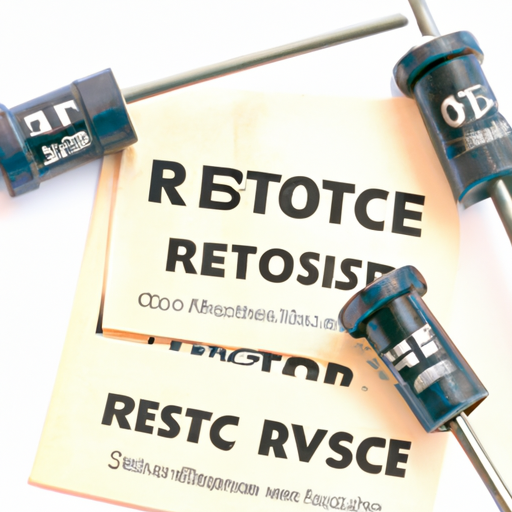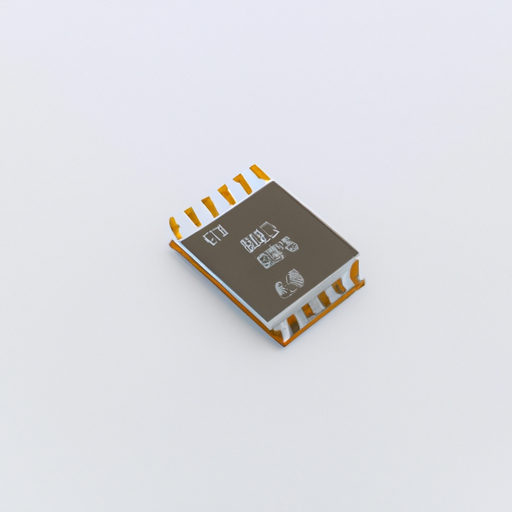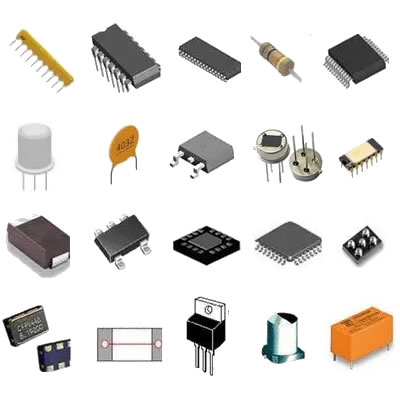What kind of product is the resistor voltage?
What Kind of Product is the Resistor Voltage?
I. Introduction
A. Definition of Resistor Voltage
Resistor voltage refers to the voltage drop that occurs across a resistor when an electric current flows through it. This phenomenon is a fundamental aspect of electrical circuits and is governed by Ohm's Law, which states that the voltage (V) across a resistor is equal to the product of the current (I) flowing through it and the resistance (R) of the resistor (V = I × R). Understanding resistor voltage is crucial for anyone working with electrical circuits, as it plays a vital role in circuit design and functionality.
B. Importance of Resistor Voltage in Electrical Circuits
Resistor voltage is essential for controlling and managing electrical energy within circuits. It helps in limiting current, dividing voltages, and conditioning signals, making it a cornerstone of electronic design. Without a proper understanding of how resistor voltage works, engineers and hobbyists alike may encounter issues such as circuit failure, component damage, or inefficient operation.
C. Purpose of the Article
This article aims to provide a comprehensive understanding of resistor voltage, including its definition, the role of resistors in circuits, the relationship between voltage and resistance, and practical applications. By the end of this article, readers will have a clearer grasp of resistor voltage and its significance in electrical engineering.
II. Understanding Resistors
A. What is a Resistor?
1. Definition and Function
A resistor is a passive electrical component that resists the flow of electric current, thereby creating a voltage drop. Its primary function is to control the amount of current that can pass through a circuit, which is crucial for protecting sensitive components and ensuring proper circuit operation.
2. Types of Resistors
Resistors come in various types, each serving different purposes:
Fixed Resistors: These resistors have a constant resistance value and are commonly used in circuits where a specific resistance is required.
Variable Resistors: Also known as potentiometers or rheostats, these resistors allow users to adjust the resistance value, making them ideal for applications like volume controls in audio equipment.
Specialty Resistors: These include thermistors, photoresistors, and others designed for specific applications, such as temperature sensing or light detection.
B. The Role of Resistors in Circuits
1. Current Limiting
One of the primary roles of resistors is to limit the current flowing through a circuit. This is particularly important in protecting components like LEDs, which can be damaged by excessive current.
2. Voltage Division
Resistors can be used in series to create a voltage divider, allowing designers to obtain a desired voltage level from a higher voltage source. This is commonly used in sensor applications and reference voltage generation.
3. Signal Conditioning
In signal processing, resistors are used to condition signals by filtering out noise or amplifying certain frequencies, ensuring that the output signal is clean and usable.
III. The Concept of Voltage
A. Definition of Voltage
Voltage, often referred to as electric potential difference, is the measure of electric potential energy per unit charge between two points in a circuit. It is the driving force that pushes electric charges through a conductor.
B. Relationship Between Voltage, Current, and Resistance (Ohm’s Law)
Ohm’s Law is a fundamental principle in electrical engineering that describes the relationship between voltage (V), current (I), and resistance (R). It can be expressed as:
\[ V = I \times R \]
This equation illustrates that the voltage across a resistor is directly proportional to the current flowing through it and the resistance value. Understanding this relationship is crucial for analyzing and designing electrical circuits.
C. Importance of Voltage in Electrical Engineering
Voltage is a critical parameter in electrical engineering, as it determines how much energy is available to drive current through a circuit. Proper voltage levels are essential for the functionality of electronic devices, and engineers must carefully consider voltage requirements when designing circuits.
IV. Resistor Voltage Explained
A. What is Resistor Voltage?
1. Definition and Explanation
Resistor voltage is the voltage drop that occurs across a resistor when current flows through it. This voltage drop is a direct result of the resistor's resistance value and the amount of current passing through it, as described by Ohm’s Law.
2. How Resistor Voltage is Measured
Resistor voltage can be measured using a multimeter, which is connected in parallel to the resistor. The multimeter will display the voltage drop across the resistor, allowing engineers to verify that the circuit is functioning as intended.
B. Factors Affecting Resistor Voltage
1. Resistance Value
The resistance value of a resistor directly affects the voltage drop across it. Higher resistance values will result in a larger voltage drop for a given current, while lower resistance values will produce a smaller voltage drop.
2. Current Flowing Through the Resistor
The amount of current flowing through the resistor also influences the voltage drop. According to Ohm’s Law, as current increases, the voltage drop across the resistor will also increase, assuming the resistance remains constant.
3. Temperature Effects
Temperature can affect the resistance of a resistor, which in turn impacts the voltage drop. Most resistors have a temperature coefficient, meaning their resistance changes with temperature. This is particularly important in precision applications where temperature variations can lead to significant errors.
V. Applications of Resistor Voltage
A. In Electronic Circuits
1. Voltage Divider Circuits
Voltage dividers are commonly used in electronic circuits to obtain a specific voltage level from a higher voltage source. By using two resistors in series, the output voltage can be adjusted to meet the requirements of various components.
2. Biasing Transistors
In transistor circuits, resistors are used to set the biasing conditions, ensuring that the transistor operates in the desired region of its characteristic curve. This is crucial for amplifying signals effectively.
B. In Power Supply Circuits
1. Voltage Regulation
Resistors play a vital role in voltage regulation circuits, helping to maintain a stable output voltage despite variations in input voltage or load conditions.
2. Load Resistors
Load resistors are used to simulate a load in testing scenarios, allowing engineers to evaluate the performance of power supply circuits under different conditions.
C. In Signal Processing
1. Filtering
Resistors are often used in conjunction with capacitors and inductors to create filters that can block or pass specific frequency ranges, essential for audio and communication systems.
2. Amplification
In amplifier circuits, resistors are used to set gain levels and stabilize the circuit, ensuring that the output signal is amplified correctly without distortion.
VI. Practical Considerations
A. Choosing the Right Resistor
1. Resistance Value
Selecting the appropriate resistance value is crucial for achieving the desired voltage drop and current flow in a circuit. Engineers must consider the specific requirements of their application when choosing resistors.
2. Power Rating
Resistors have a power rating that indicates the maximum amount of power they can dissipate without overheating. It is essential to choose resistors with adequate power ratings to prevent damage.
3. Tolerance
Tolerance refers to the allowable variation in resistance value. Choosing resistors with the appropriate tolerance is important for ensuring circuit reliability and performance.
B. Common Mistakes in Resistor Voltage Applications
1. Overloading Resistors
One common mistake is using resistors with insufficient power ratings, leading to overheating and potential failure. Engineers must ensure that the resistors used in their designs can handle the expected power levels.
2. Incorrect Circuit Design
Poor circuit design can lead to incorrect voltage levels and current flow, resulting in malfunctioning circuits. It is crucial to carefully analyze and simulate circuits before implementation.
VII. Conclusion
A. Summary of Key Points
Resistor voltage is a fundamental concept in electrical engineering, playing a critical role in circuit design and functionality. Understanding the relationship between voltage, current, and resistance is essential for anyone working with electronic circuits.
B. The Importance of Understanding Resistor Voltage in Electrical Engineering
A solid grasp of resistor voltage allows engineers to design efficient and reliable circuits, ensuring that electronic devices operate as intended. This knowledge is vital for both novice and experienced engineers alike.
C. Future Trends in Resistor Technology and Applications
As technology continues to advance, the development of new resistor materials and designs will likely lead to improved performance and efficiency in electronic circuits. Innovations such as smart resistors and integrated resistor networks may further enhance the capabilities of modern electronics.
VIII. References
A. Suggested Reading
- "The Art of Electronics" by Paul Horowitz and Winfield Hill
- "Electrical Engineering 101" by Darren Ashby
B. Relevant Online Resources
- Electronics tutorials on websites like All About Circuits and Electronics-Tutorials.ws
- Online courses on platforms like Coursera and edX
C. Academic Journals and Articles on Resistor Technology
- IEEE Transactions on Circuits and Systems
- Journal of Electrical Engineering & Technology
By understanding resistor voltage and its applications, readers can enhance their knowledge and skills in electrical engineering, paving the way for successful circuit design and implementation.







